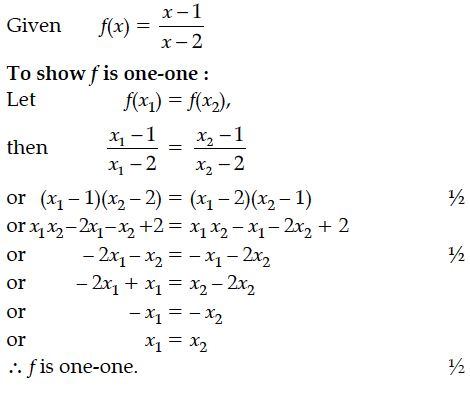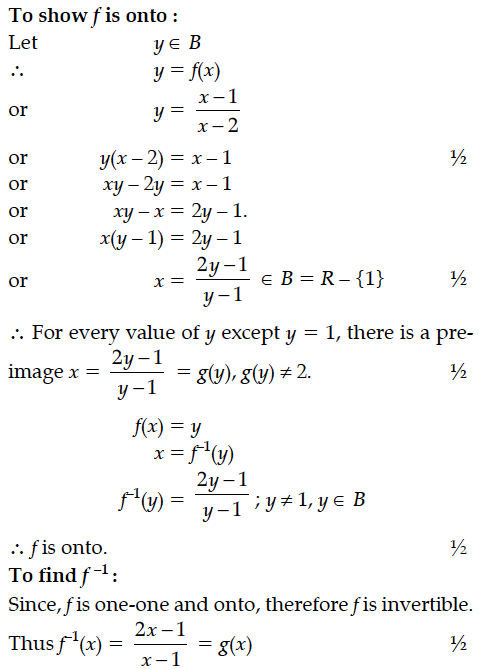Let A = R – {2}, B = R – {1}. If f : A → B is a function defined by show that f is one-one and onto. Hence find


Let A = R – {3}, B = R – {1}. Let f : A → B be defined by f(x) = Show that f is bijective. Also, find
(i) x, if = 4
(ii)
Show that the function f : R {x ∈ R – 1 < x < 1} defined by f(x) = x ∈ R is one-one and onto function. Hence find f⁻¹(x).
If C = 0·003x³ + 0·02x² + 6x + 250 gives the amount of carbon pollution in air in an area on the entry of x number of vehicles, then find the marginal carbon pollution in the air, when 3 vehicles have entered in the area.
Sand is pouring from the pipe at the rate of 12 cm³/s. The falling sand forms a cone on a ground in such a way that the height of cone is always one-sixth of radius of the base. How fast is the height of sand cone increasing when the height is 4 cm ?
Assume that each born child is equally likely to be a boy or a girl. If a family has two children, what is the conditional probability that both are girls ? Given that :
(i) the youngest is a girl.
(ii) atleast one is a girl.
